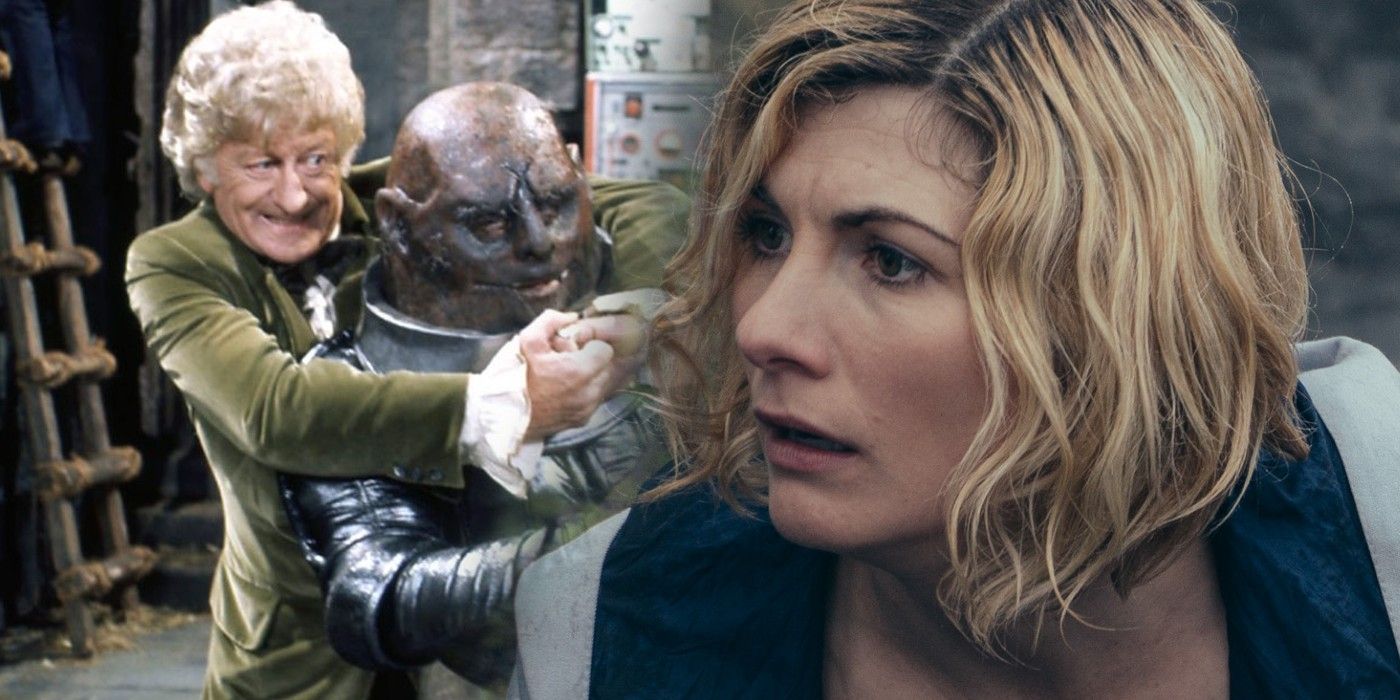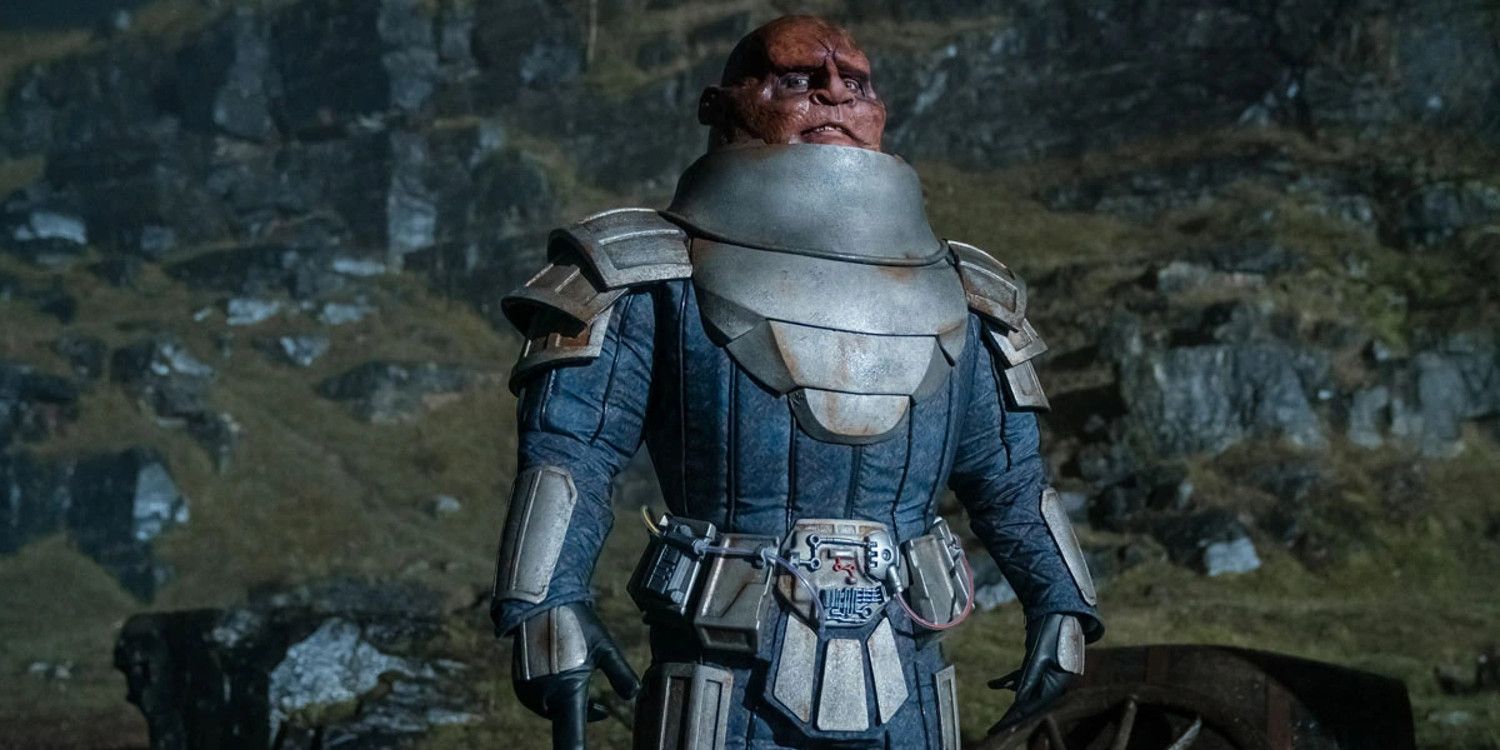Doctor Who has always indulged in long-term storytelling, but "War of the Sontarans" completes a Third Doctor storyline that began almost 50 years ago. Doctor Who: Flux's second episode finds Jodie Whittaker and her brand new assistant, John Bishop's Dan, fighting a Sontaran invasion across two time periods. Taking advantage of the chaos caused by Swarm and the Flux, the Sontarans decided Doctor Who season 13, episode 2 would be the perfect time to make another attempt at invading Earth. As the prelude to a larger, history-spanning assault, the Sontarans launch a two-pronged attack on the Crimean War and Anfield Stadium in 2021 - the latter's worst defeat since Manchester City in the 2020/21 season.
While Dan cooks up a solution in the present, The Doctor addresses Crimea, confronting Commander Skaak in a parley and demanding to know what the Sontaran fleet is up to. Sontarans have never been Doctor Who's most enigmatic adversaries, and Skaak readily declares he's asserting the claim on Earth made by "the great Commander Linx." Just as these Sontarans are continuing the work Linx began, Doctor Who: Flux is continuing the story Linx appeared in - the very first Sontaran episode, "The Time Warrior."
Also the first occasion Jon Pertwee's Third Doctor teamed up with Sarah Jane Smith, "The Time Warrior" took The Doctor back to Earth's Middle Ages, where a Sontaran called Linx had crash-landed. Linx immediately proclaimed Earth was now property of the Sontaran Empire, and set about arming English knights with futuristic weaponry, threatening the very fabric of human history. With The Doctor and Sarah Jane's help, Commander Linx was killed when - and stop us if you've heard this one before - someone exploited his probic vent weakness.
Revealing the consequences of an episode that aired all the way back in 1973, Doctor Who: Flux draws a clear line between the past (relatively speaking) and 2021's "War of the Sontarans." Doctor Who is one of precious few TV shows that can get away with such a decade-spanning trick, where a Third Doctor adventure directly influences the Thirteenth, and Commander Skaak honoring his predecessor makes "The Time Warrior" even more significant in hindsight, as the Sontarans are still rattling on about Linx. Sure, there have been invasion attempts since, but "War of the Sontarans" is the first to directly attribute the clone race's presence on Earth to Commander Linx. Fans might even enjoy binging "The Time Warrior" and "War of the Sontarans" as a two-part, multi-Doctor narrative, where a lone, stranded Sontaran dies trying to conquer Earth, before his people arrive to finish their fallen comrade's work, this time dueling a different incarnation of The Doctor.
The "War of the Sontarans" Linx connection marks a refreshing change to how recurring villains are usually handled in Doctor Who. When Daleks or Cybermen invade Earth for the umpteenth time, very rarely does Doctor Who acknowledge specific attacks from stories that aired 10 regenerations ago, and this is partly why the BBC sci-fi series has a reputation for "fluid" continuity. The cause-and-effect between "The Time Warrior" and "War of the Sontarans" provides a more interesting reason for the villains' return than "because they're evil," and gives the Sontarans a Doctor Who chronology that tracks from their first episode, all the way up to this latest embarrassing defeat.


